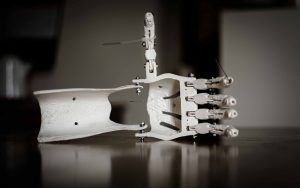
Manufacturers often use 3D printers to build prototypes of new products from a computer-aided design (CAD) file. Known as rapid prototyping, it’s become an increasingly popular alternative to traditional prototyping methods in recent years. As its name suggests, rapid prototyping emphasizes speed to allow for blazing-fast production times. Here are fun facts about rapid prototyping and how it works.
#1) Originated During the 1970s
Many people assume that rapid prototyping is a new process. After all, it requires the use of a 3D printer, and 3D printers haven’t been around very long. The truth is that rapid prototyping originated during the 1970s as a project by Bell Labs. Computer scientist and engineer Joseph Condon developed a 3D printer while working at Bell Labs that was capable of building circuit boards from a computer file.
#2) US Market Valued at Over $300 Million
While rapid prototyping is performed by manufacturing companies throughout the world, the United States holds the largest chunk of the market. Statistics show that the U.S. rapid prototyping market is valued at over $300 million as of 2020 — that’s more than any other country. Furthermore, market experts predict this trend will continue as more and more U.S. manufacturing companies embrace rapid prototyping in their operations.
#3) FFF Is the Most Common Method
There are over a dozen rapid prototyping methods, though none are more popular than fused filament fabrication (FFF). Also known as filament freeform fabrication, it’s a simple and easy-to-perform rapid prototyping method that’s characterized by the use of a continuous filament. The filament runs through the printer head where it’s extruded out and onto the printer bed.
#4) Saves Money
It’s well-known that rapid prototyping offers a fast and efficient way for manufacturing to build prototypes. Its benefits, however, go beyond speed. Not only is rapid prototyping fast; it’s cost-effective for manufacturing companies. Building prototypes manually — or by using other traditional methods — costs money. Manufacturing companies must speed money on research, testing, development and production. With rapid prototyping, on the other hand, they can bypass many of these steps to quickly build a prototype from a CAD file.
#5) Used to Build Electric Cars
You might be surprised to learn that rapid prototyping was used to build prototypes of electric cars. A team of students at Aachen University, in fact, built a working prototype of an all-electric car using a rapid prototyping system in just one year.
